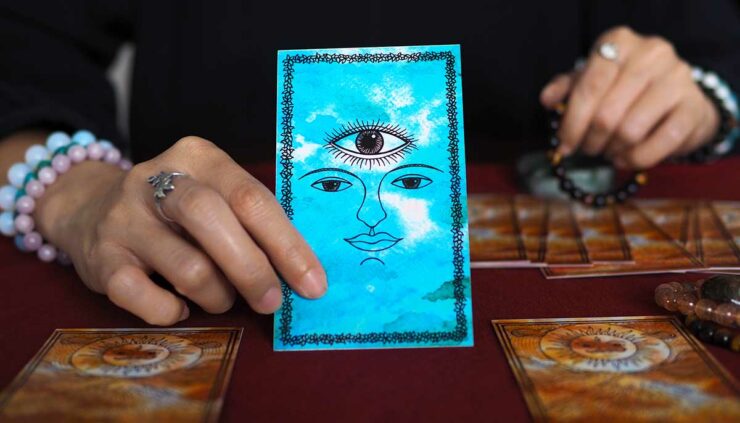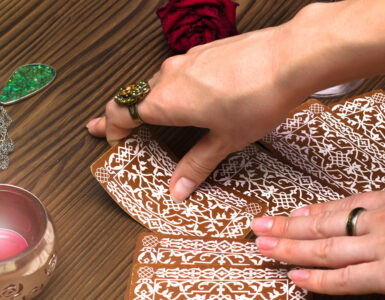Although we are obviously big fans of astrology here, it’s just one of many ancient forms of understanding the mystical energy that shapes our lives. Here are XX more time-tested forms of divination that you can try at home this weekend.
Tarot Cards
We have to start with tarot, of course. If you don’t have a deck at home, you can try using an app–the point is the symbols, not the paper they are printed on. Many people spend decades mastering the art of tarot, but you can begin with a simple 1- or 3-card spread to gain insight into a particular problem.
A great tool for beginners and practiced tarot readers is to draw a card in the morning while holding the question “What should I know today?” in your mind. Meditate for a few minutes on the card’s meaning, and then look for how it will manifest throughout the day.
Oracle or Lenormand Cards
I’ve lumped these two types of divination cards together for convenience, but they’re not exactly the same. Oracle cards are free-form decks created by artists and mediums to inspire or illuminate your path.
They can be drawn from many different spiritual traditions, such as angels, goddesses, fairies, or even cats. These cards lack the structure of tarot, but they can be equally helpful in offering insight if you find a deck that resonates with you.
Lenormand decks use the suits of a traditional deck of cards, but attach simple imagery to each one. Together, they tell a story. For example, if you draw woman and then birds, you might need to watch out for gossiping friends!
Runes
There are several types of runes used in divination, but two of the most common are the Celtic Ogham or Norse Futhark. Casting runes dates back long before tarot, which can be both good and bad for the modern person looking for answers.
The symbols tend to take a little more effort to interpret and adapt to the present day. However, things haven’t changed that much in the fundamental problems we all face.
You can buy beautiful rune sets, but it’s not that hard to craft your own at home from sticks, wooden discs, or clay.
I Ching
Originating in China, the I Ching (or Yi Jing) is one of the most ancient forms of divination. It has been around for about 2500 years! The practice can be tricky to learn, especially for Westerners, but it is deeply rewarding. Infinitely adaptable to any situation or question, the hexagrams of the I Ching are literally the building blocks of the universe.
The most common way to consult this oracle is through coins. Depending on how they land, they represent either a solid or broken line. Together, they build a hexagram that can give you insight into your situation.
Pendulum
If you need an answer in a hurry, then try pendulum divination. There are lovely pendulums for sale, but honestly you just need a length of string or chain and something with a bit of weight to attach to the bottom. A crystal is the usual preferred option, but you could even use a favorite necklace!
Pendulum divination is best for simple, yes-no questions. First, you need to “calibrate” it by asking a question to which you already know the answer. Hold it over your upturned palm and ask something like, “Is my birthday ______?” and see what happens. You should see a pattern, such as side to side means yes, while up and down means no.
Tea Leaves
Reading tea leaves–or tasseomancy–is a challenging form of divination. However, even if you don’t quite get the hang of it the first time, at least you can enjoy a nice cup of tea! The easiest way to get started is by using a specially marked cup. However, you can use any teacup if you’re willing to try it.
The trick is to make tea with loose leaves, not a teabag. Drink it, swirl the dregs, and then see what kind of patterns are revealed. You can look up standard symbols online, or you can use your intuition.














